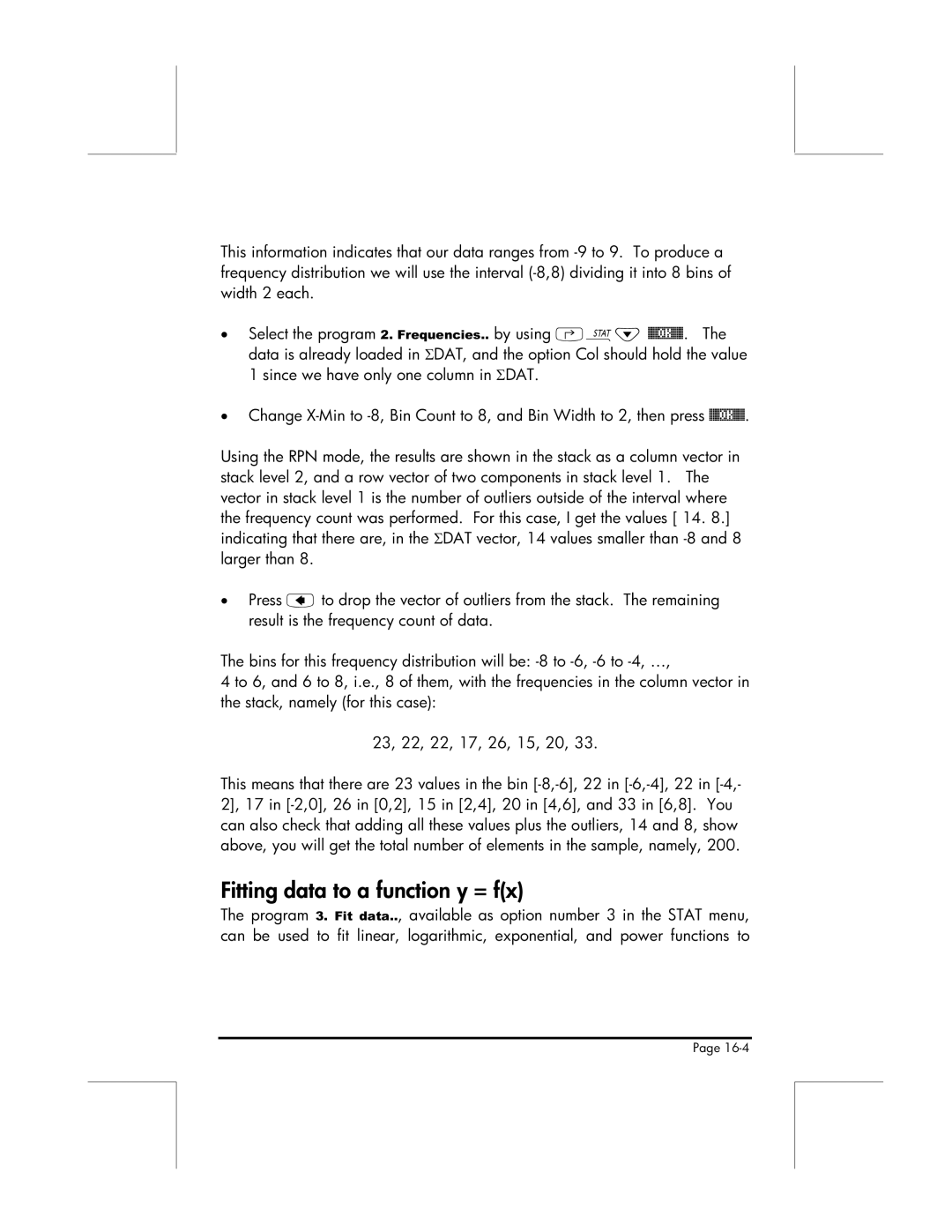
This information indicates that our data ranges from
•Select the program 2. Frequencies.. by using ‚Ù˜ @@@OK@@@. The data is already loaded in ΣDAT, and the option Col should hold the value 1 since we have only one column in ΣDAT.
•Change
Using the RPN mode, the results are shown in the stack as a column vector in stack level 2, and a row vector of two components in stack level 1. The vector in stack level 1 is the number of outliers outside of the interval where the frequency count was performed. For this case, I get the values [ 14. 8.] indicating that there are, in the ΣDAT vector, 14 values smaller than
•Press ƒto drop the vector of outliers from the stack. The remaining result is the frequency count of data.
The bins for this frequency distribution will be:
4 to 6, and 6 to 8, i.e., 8 of them, with the frequencies in the column vector in the stack, namely (for this case):
23, 22, 22, 17, 26, 15, 20, 33.
This means that there are 23 values in the bin
Fitting data to a function y = f(x)
The program 3. Fit data.., available as option number 3 in the STAT menu, can be used to fit linear, logarithmic, exponential, and power functions to
Page
